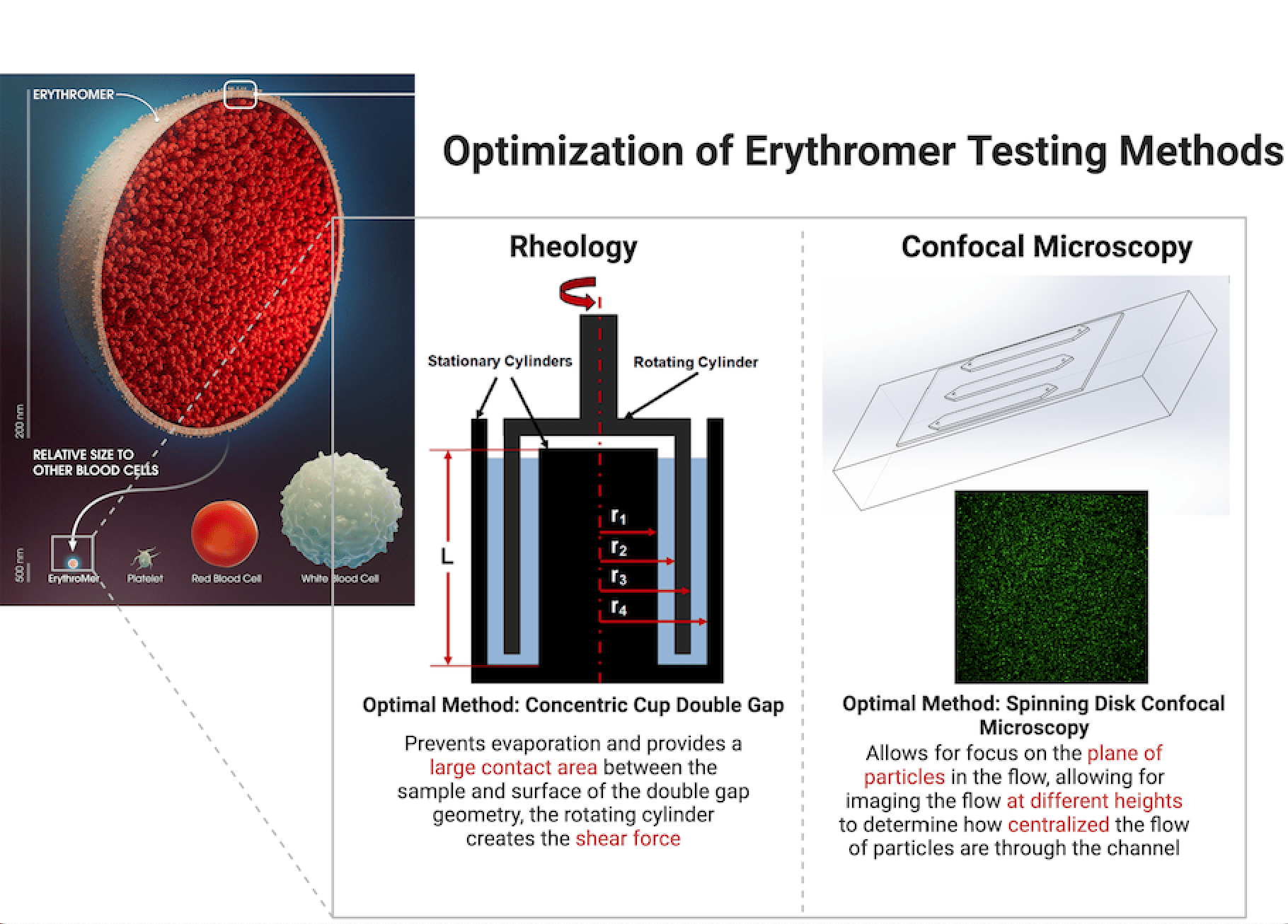Project Description:
The US has recently experienced a significant decline in blood donations, leading to a blood shortage crisis. Current solutions include hemoglobin-based oxygen carriers (HBOCs) and perfluoro-carbon emulsions to create blood alternatives. While HBOCs may be the most promising solution, their interference with nitric oxide (NO) causes vasoconstriction and restricts blood flow. Erythromer (EM), a novel freeze-dried blood substitute composed of nanoparticle-wrapped hemoglobin, functions as an oxygen transporter. EM has a lipid shell that reduces NO scavenging; however, the EM design must still be modified to further reduce of NO interference. PEGylation of EM could reduce NO scavenging by moving the EM particles away from the vascular wall, where most NO is found. The goal of this project is to design research methods that quantify how PEGylation of EM affects viscosity and particle localization. We tested varied PEG sizes (2000 and 5000 g/mol) and different surface saturation percentages of PEG (0.3%, 3%, 5%). We found that the concentric cup double-gap method works better than cone and plate rheometry due to reduced evaporation and increased accuracy of measuring lower-viscosity fluids such as blood. We also found spinning disk confocal microscopy (SDCM) was a more effective method to quantify the inertial flow behavior of EM solutions in a resistance arteriole model compared to laser scanning confocal microscopy because it allowed faster image acquisition. Optimizing the methodologies for EM testing is important to enable future EM testing improvements, which in turn, make available an affordable and effective blood substitute that can be provided to those in critical need of blood.
